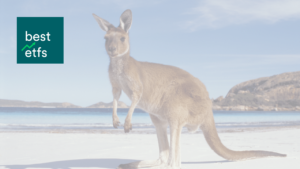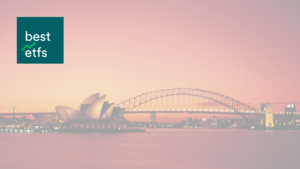The BetaShares Nasdaq 100 ETF – Currency Hedged (ASX:HNDQ)
The BetaShares Nasdaq 100 ETF invests in 100 of the largest non-financial companies listed on the NASDAQ stock exchange (i.e. the USA). This is the currency hedge version of the BetaShares NASDAQ 100 ETF (ASX: NDQ).
According to our most recent data, the HNDQ ETF had $139.51 million of money invested. With HNDQ’s total funds under management (FUM) figure over $100 million, the ETF meets our team’s minimum investment criteria for FUM levels. As a general rule, our team draws the line at $100 million for ETFs in the International shares sector because we believe that, relative to smaller ETFs, achieving this amount of FUM lowers the chance that the ETF issuer will close the ETF.
Fees to consider
According to our numbers, the annual management fee on the HNDQ ETF is .51%. The issuer, BetaShares, collects this fee automatically.
Meaning, if you invested $2,000 in the HNDQ ETF for a full year you could expect to pay management fees of around $10.20. This fee is different from the fee you pay to your brokerage provider (e.g. CommSec, NabTrade, SelfWealth, etc.), which is the fee to buy or sell the ETF. In addition to a management fee charged by the issuer, be mindful to check the ‘spread‘ for the ETF.
A fee comparison
Fees aren’t the only key consideration for ETF investors, but it’s an easy thing to do. To understand if the ETF you’re looking at is too costly, compare it with other ETFs from the same sector, and against the industry average. For example, the average management fee (MER) across all of the ETFs covered by the Best ETFs Australia team was 0.5%, which is $10.00 per $2,000 invested. Keep in mind that small changes in the fees paid can make a big difference after 10 or 20 years. You should read the HNDQ Product Disclosure Statement (PDS), available on the ETF issuer’s website, because it will detail the fees, tax implications and the latest information.
These are high level ideas or basics of the HNDQ ETF. To learn more about it, click through to access our free investment review.
The VanEck Vectors MSCI International Sustainable Equity ETF (ASX:ESGI)
The VanEck ESGI ETF provides exposure to sustainable international companies not including Australian or fossil fuel stocks.
With our numbers for July 2022, ESGI’s FUM stood at $125.14 million. Since the ESGI’s FUM is over $100 million, our investing team would say the ETF has met our minimum criteria for the total amount invested, otherwise known as FUM. A very sustainable ETF in the Index sector should be able to scale well and become profitable for the ETF issuer.
A look at the ESGI ETF fee load?
VanEck, the ETF issuer, charges a yearly management fee of 0.55% for the ESGI ETF. Meaning, if you invest $2,000 for a full year from now you can expect to pay a management fee of around $11.00.
The management fee is above the average for all ETFs on our list of ASX ETFs, but keep in mind the ETF may be able to justify the higher price tag with superior performance over time.
Before you read the Product Disclosure Statement (PDS) or speak to your financial adviser about the ESGI ETF report (both are very important), take a look at our free investment review.
So how can you actually invest the ESGI ETF? By getting a free brokerage account with Pearler. If you join Pearler in the month of May 2024, with your free Pearler account you can buy the ESGI ETF and pay $0 in brokerage fees. All you have to do is buy and hold the ETF for 12 months.
You can invest as little as $500 in the ESGI ETF to take-up this offer. Sounds pretty good, right? To invest in ESGI for $0 brokerage, simply click here to visit Pearler’s website and sign up.



